Turkish food is shaped by centuries of culinary tradition. It brings together fresh ingredients, bold Turkish spices, and regional flavours.
For first-time visitors, food in Turkey (Türkiye) often begins with a generous Turkish breakfast. Then it continues with Turkish street food and delicious home-style dishes found across the country.
Newcomers can explore Turkish pilaf, hearty Turkish food with eggplant, Turkish vegetarian dishes, or meatless stuffed grape leaves. Many beloved Turkish recipes rely on simple methods and quality local produce.
No introduction to Turkish cuisine is complete without reference to Turkish tea (çay) and Turkish coffee. Turks enjoy the two drinks throughout the day and often pair them with classic Turkish desserts such as baklava or lokum.
Turkish food is more than merely eating. Visitors experience the flavours, stories, and traditions that make this cuisine so special.
What is Turkish food?
A Turkish meal often starts with soup or meze, moves to a main dish of meat, vegetables, or legumes, and ends with pilaf, salad, or dessert. Turkish food culture values fresh bread on the table, shared plates, and plenty of tea.
What should I eat in Turkey?
First-time visitors should try kebabs, lahmacun, stuffed wine vegetables, and baklava. Also worth trying are Turkish breakfasts, soups, pastries, stuffed meatballs, and Turkish ice cream (dondurma).
The dishes below give a simple checklist of Turkish food to try on your trip.
Turkish Breakfast
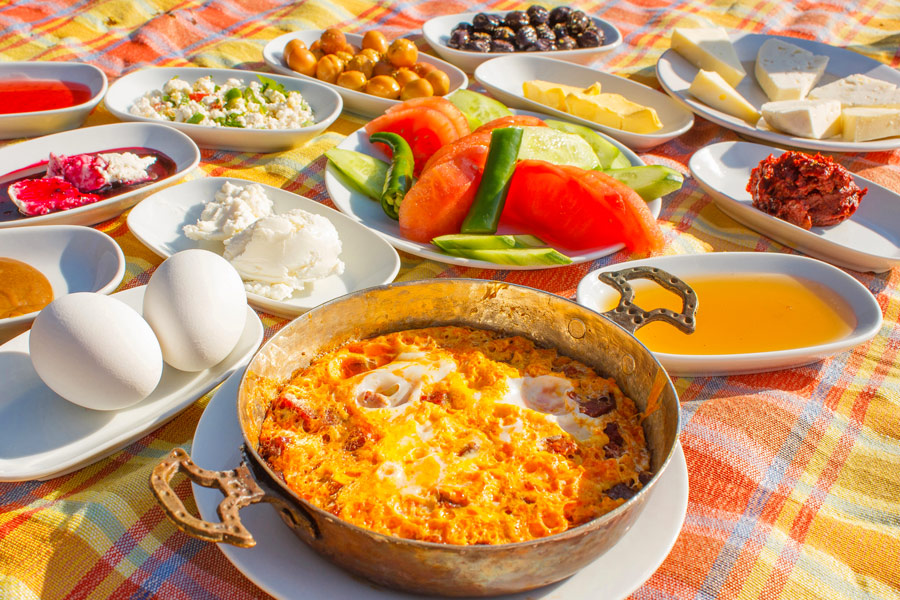
A traditional Turkish breakfast (kahvaltı) has a truly unmatchable character. What makes it so unique is not one single dish, but the variety. On the table are small plates of olives, cheeses, fresh tomatoes and cucumbers, eggs, honey, clotted cream (kaymak), jams, and warm bread. And of course, no breakfast in Turkey is complete without a glass of Turkish tea (çay) or Turkish coffee.
Mercimek Çorbası (Lentil Soup)
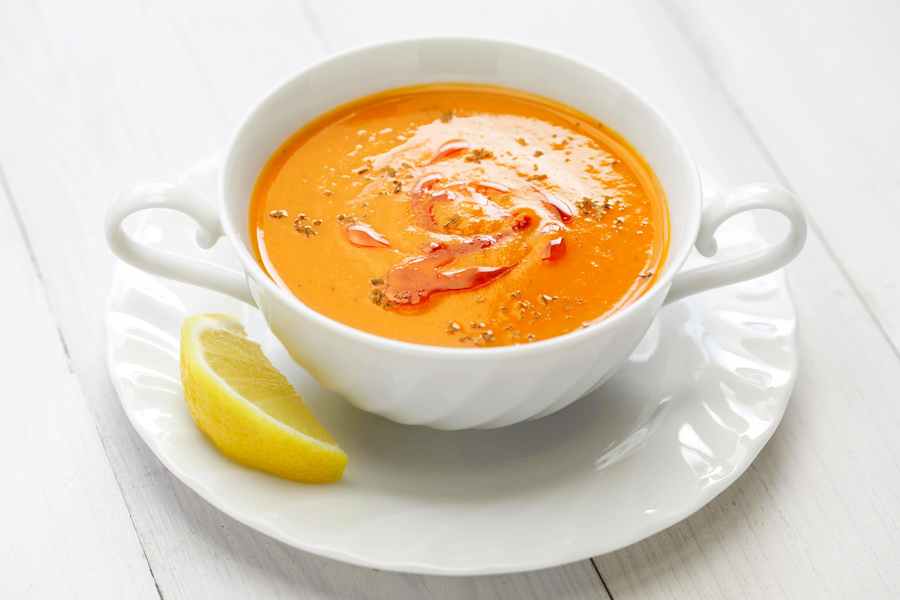
Among soups and starters, Mercimek çorbası is the most ordered food in Turkey. It exemplifies reinterpretations of Ottoman and Anatolian culinary traditions.
This rich, creamy soup comprises red lentils, onions, carrots, and Turkish spices. It is a staple in the Eastern Mediterranean. Besides, the soup is integral to the culinary cultures of Greece, Egypt, and Cyprus.
İşkembe Çorbası (Tripe Soup)
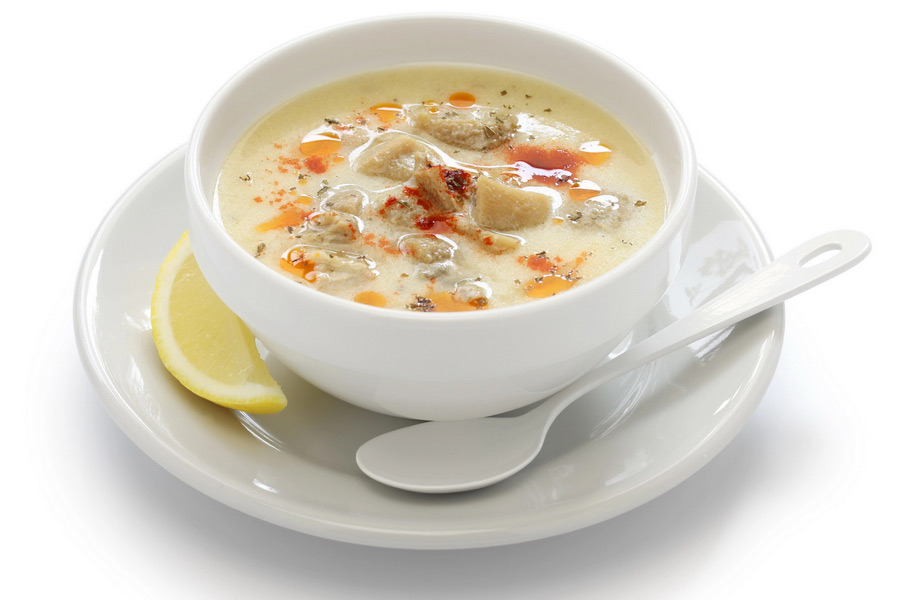
While Americans might swear by chicken noodle soup and Scots turn to fizzy Irn-Bru, Turks have long cherished işkembe çorbası (tripe soup). This traditional Turkish food is a slow-simmered soup made from a cow's or a lamb's stomach.
Bulgarians and North Macedonians call this Turkish dish şkembe chorba.
Çerkez Tavuğu (Circassian Chicken)
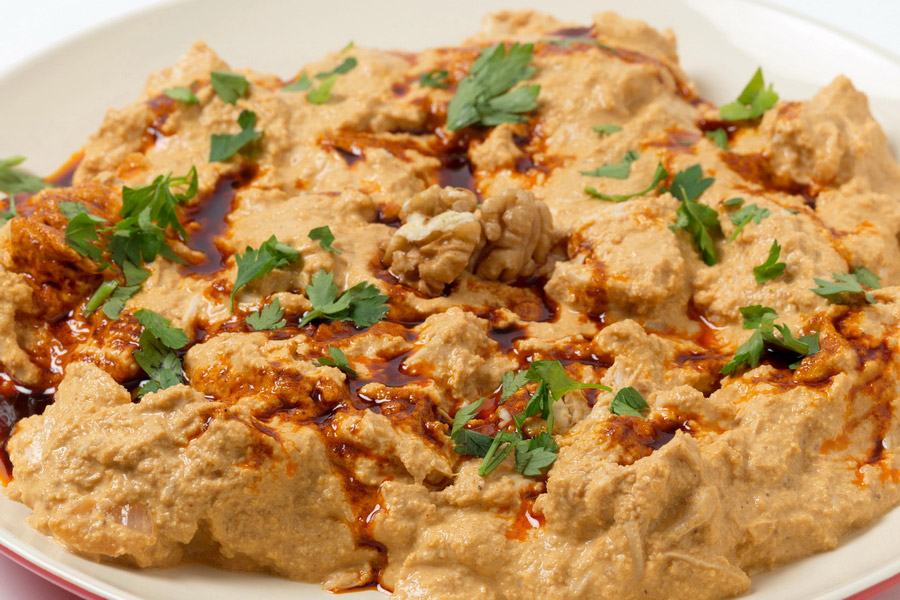
This Circassian Chicken speciality in walnut sauce became a hit with the Ottoman sultans. It is now part of Turkish food culture.
The cook first boils chicken breasts or thighs until cooked through. Then they remove them to cool off, then shred them into small strips. Crushed walnuts, shredded chicken, pre-soaked bread pieces, garlic, salt, and paprika form a thick base, veiled with parsley.
A similar dish is present in Georgian cuisine, but it does not use bread.
Lamb Mutancana
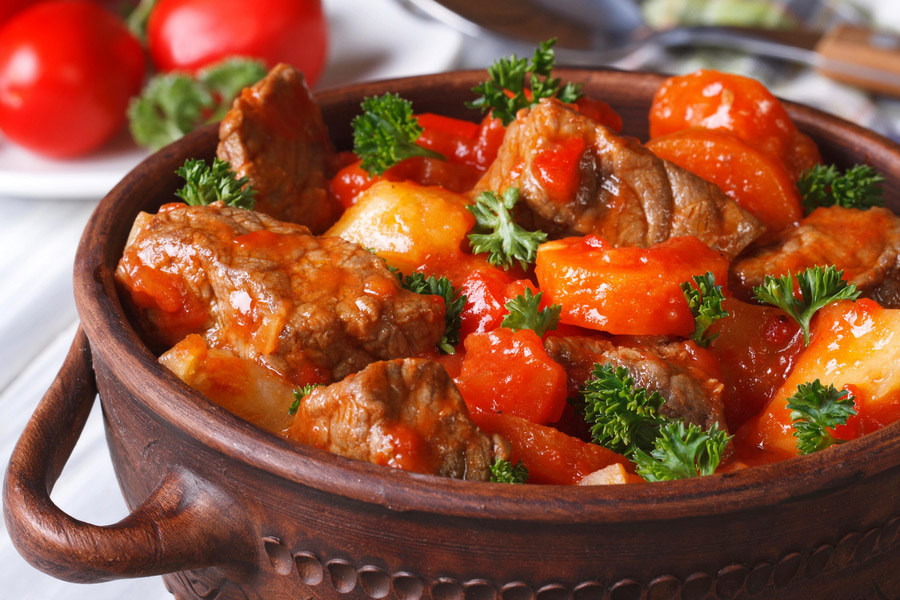
Edirne’s historical dish is one of the traditional Turkish foods and a shining example of Ottoman dishes. The main ingredients that make the meal both sweet and savoury are dried fruits.
The traditional version does not include freekeh. Instead, it uses shallots, honey, and sumac. The latter is a red spice widely used in Kurdish, Arab, Lebanese, and Armenian cooking.
Hünkâr Beğendi
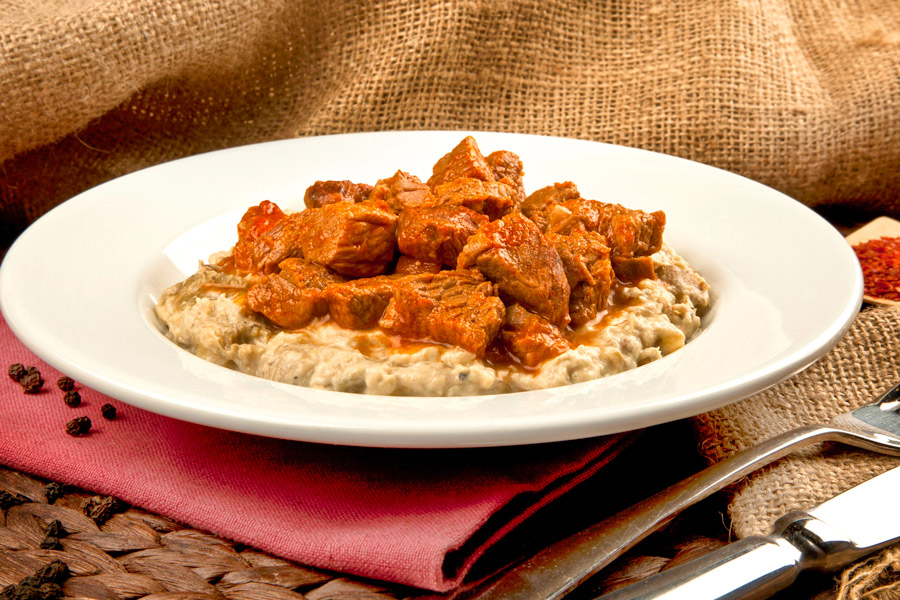
Hünkâr beğendi means "the sultan liked it" or Sultan’s Delight,” which is a clue to a popular Turkish meal at the palace. Grilled lamb cubes and roasted eggplant puree, seasoned with bechamel sauce, will quickly make one hungry. The regal heritage makes it a highlight among Turkish foods with eggplant.
Turkish Pilav
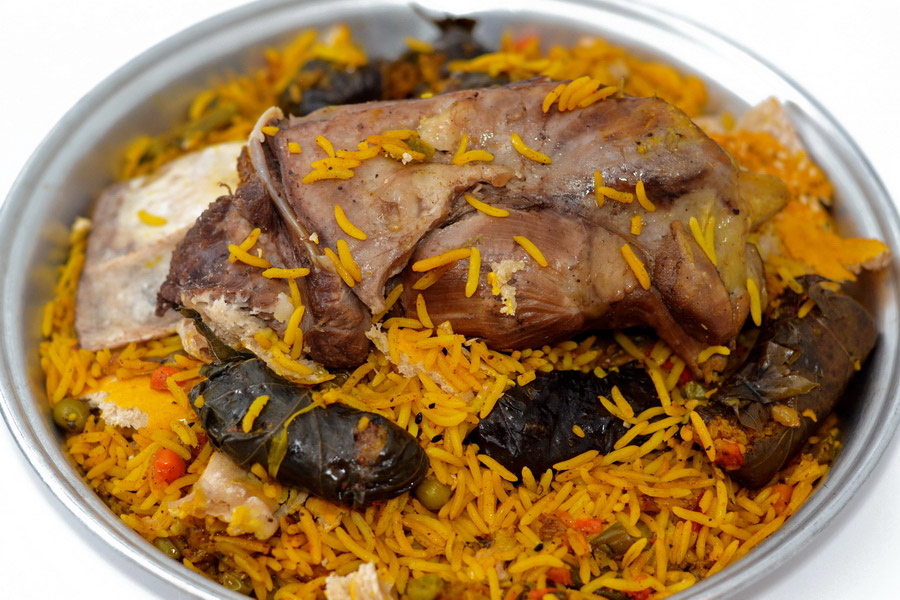
Pilav üstü incik (shanks over rice) proves just how satisfying Turkish pilav can be. This hearty Ottoman classic pairs tender, oven-roasted lamb shanks with buttery rice pilaf. It soaks up all the juices and spices.
In modern Turkish cuisine, pilaf appears everywhere, as a meze (side dish) in restaurants and everyday cooking.
Rice or wheat pilaf is typically boiled in water with meat, then mixed with butter, oil, or other fats. You need a skill to make Turkish pilav where every single grain falls apart.
A distinguished rice dish is perde pilav, rice with chicken, onions, and peanuts rolled into a dough (yufka) and topped with almonds. The increasingly common Turkish pilaf of the Black Sea Region with anchovies is hamsi pilav.
Balık Ekmek
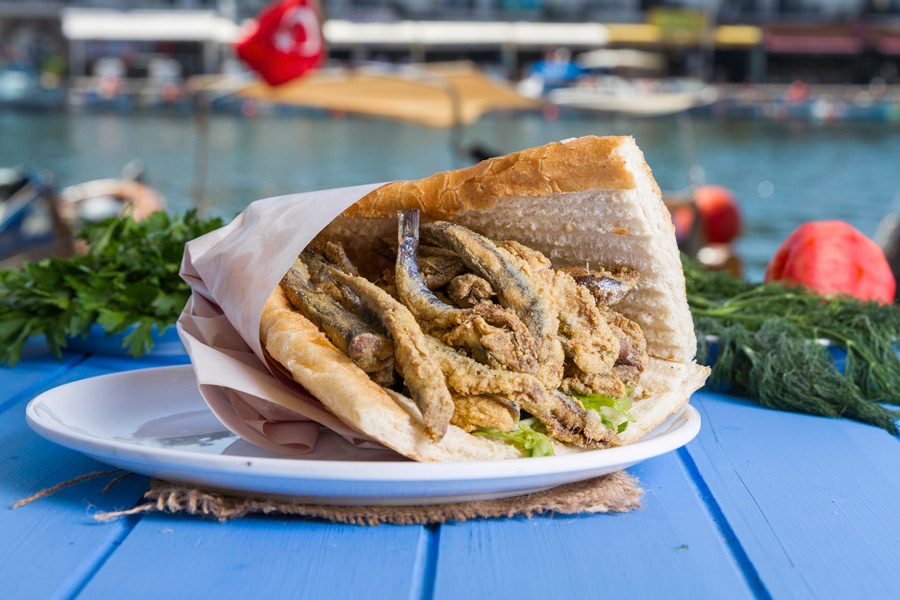
What about Turkish street food and snacks? Grabbing a sandwich is a quick way to satisfy one’s breakfast cravings. And in Turkey, few options are more iconic than balık ekmek. Street vendors grill or fry this fish snack tucked between two slices of fresh bread, often layered with tomatoes, onions, lettuce, or cabbage.
Its roots trace back to the mid-19th century, when fishers on the Bosphorus began selling simple fish sandwiches straight from their boats.
The humble fish sandwich is increasingly becoming a gourmet staple of modern Turkish cuisine.
Simit
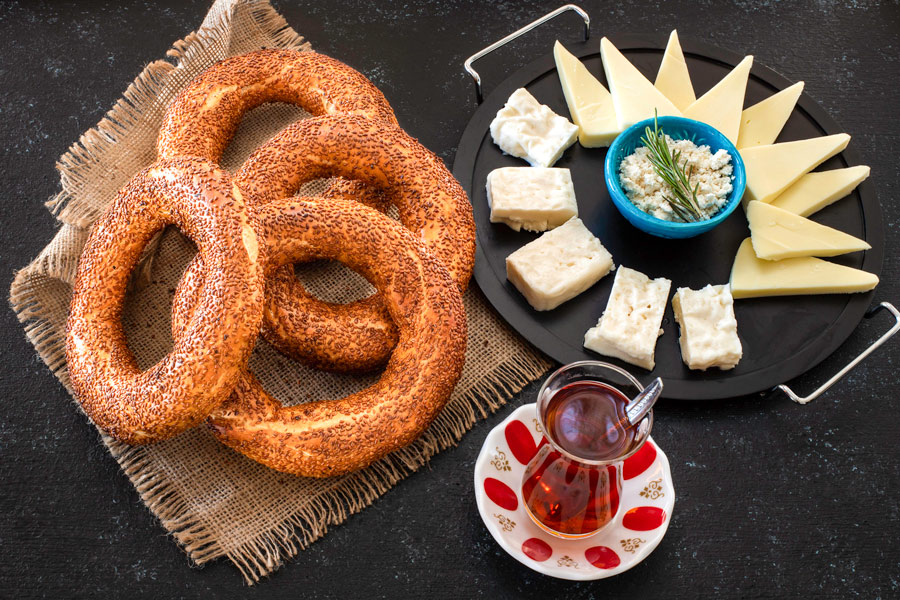
If Istanbul had a heartbeat, it might sound like the crunch of a freshly baked simit – a favoured Turkish snack. The sesame-crusted bread ring is Turkey’s answer to the bagel. Yet it is only lighter, crispier, and sold on nearly every corner. Street vendors carry them in baskets atop their heads or wheel them through crowded avenues.
It is quite impressive that simit has a history of over 500 years. It might have first formed part of palace cuisine during the reign of Sultan Suleyman the Magnificent. Later, it moved to the streets of Istanbul. The first mention and description of simit appear in the 16th-century historical annals of Ottoman explorer Evliya Çelebi.
Hazelnut Lahmacun
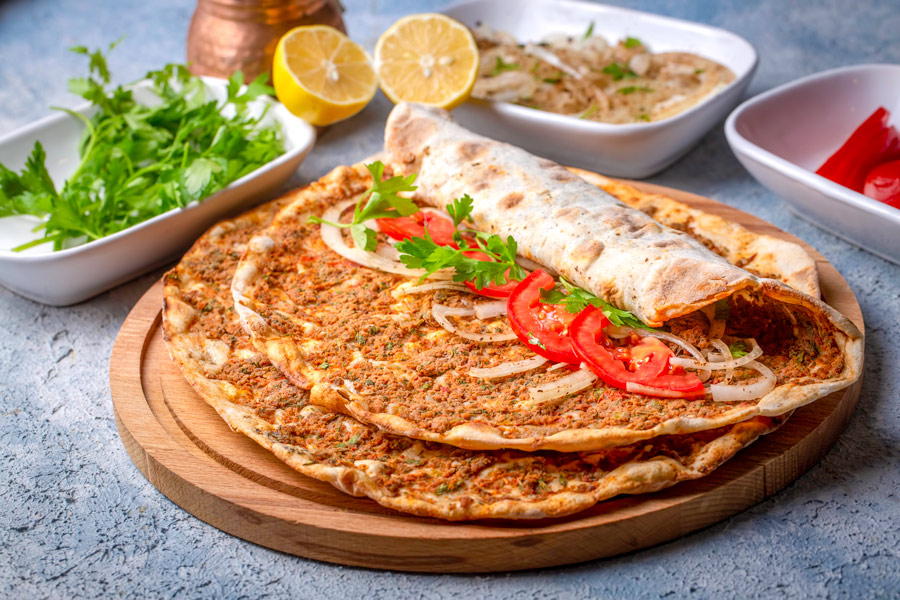
It might sound like a sweet treat, but hazelnut lahmacun has nothing to do with nuts and sugar. This Turkish street food, called "Turkish pizza," comes from Mersin. It gets its name from its small, round shape – roughly the size of a hazelnut – not its ingredients.
Hazelnut lahmacun is a local delight for good reason. Chefs top it with minced lamb meat, onion, tomato, Turkish peppers, and spices. Guests can enjoy the regional star of southern Turkish dishes straight from the oven.
Börek
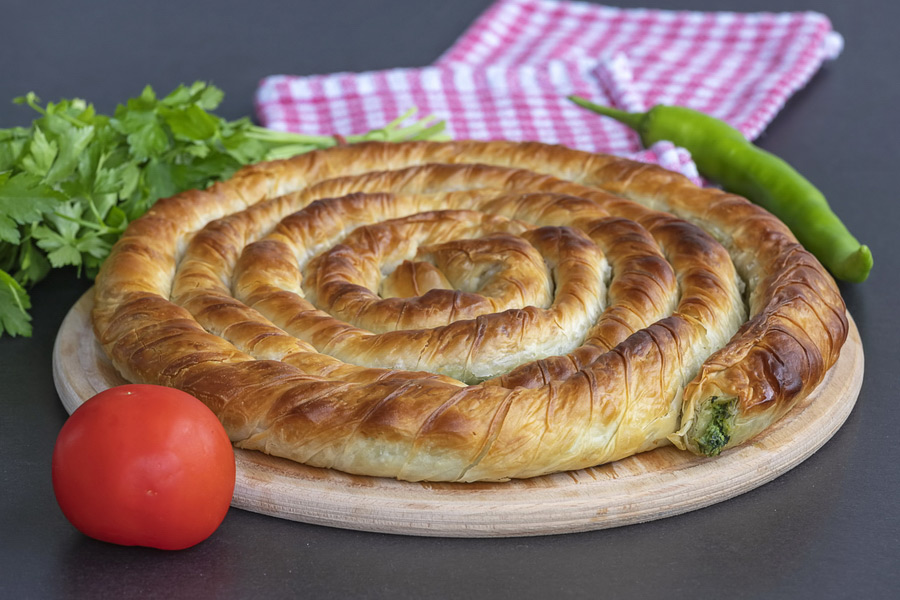
Crispy and golden börek, also called burek in the Balkans, is a flaky Turkish pastry. You can fill it with cheese, herbs, minced meat, or spinach.
Its origins are debated. However, there is proof that Central Asian Turks loved this Turkish food long before the Ottoman Empire began.
One of the first bakers of round borek pastry was Mehmet Oğlu. He was a Turk from Istanbul who introduced this pastry to the Serbian town of Niš in 1495.
Both simit and börek are often part of the Turkish breakfast.
Kabak Çiçeği Dolması (Stuffed Zucchini Flowers)
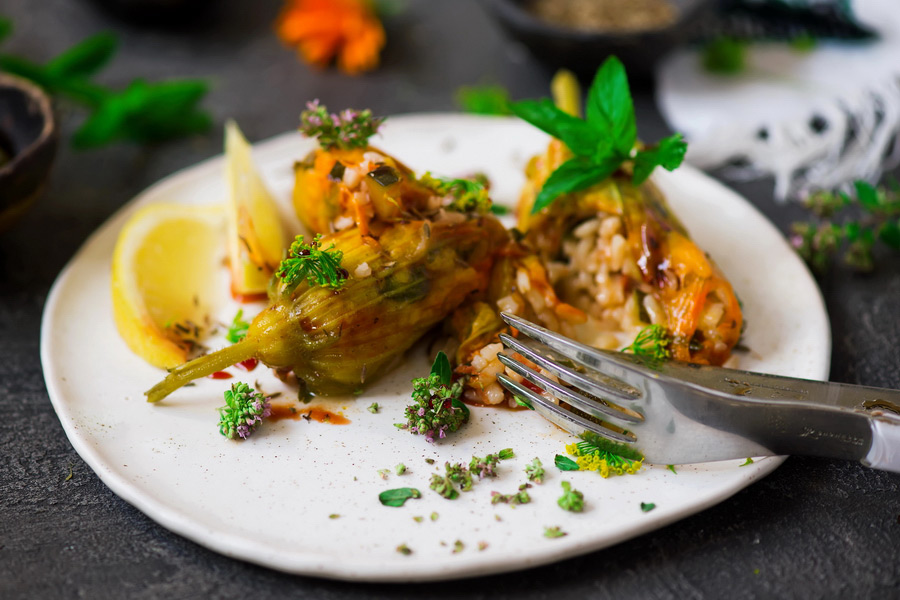
What to eat in Turkey if you are a vegetarian? Below we list a few Turkish vegetarian dishes. Let us start with kabak çiçeği dolması. In Turkish, the name translates to "stuffed zucchini flowers". This traditional dish in the Turkish Mediterranean cuisine menu is prominent in the Ayvalık region and around Izmir. Locals treat this as a staple meal during the zucchini flower season, mainly in summer.
People in Turkey classify kabak çiçeği dolması as an olive oil dish. Cooks stuff zucchini flowers with rice, onions, tomatoes, and parsley. There is a special category of Turkish vegetarian recipes called zeytinyağlı (literally, “with olive oil”).
Mücver (Zucchini Pancakes)
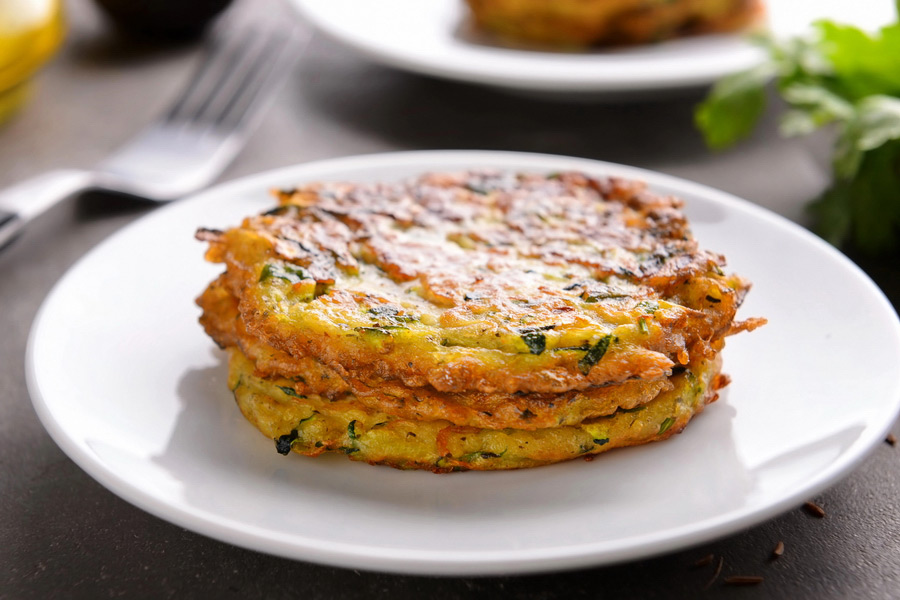
Mücver is a vegetarian delight, especially in the Aegean and the Mediterranean.
The chef rubs chopped zucchini to remove its bitterness, mixes it with flour and eggs, and fries it in the pan. Diners can pair the bite-sized fritters with walnuts, garlic, yoghurt, and lemon juice.
Yaprak Dolma (Stuffed Wine Leaves)
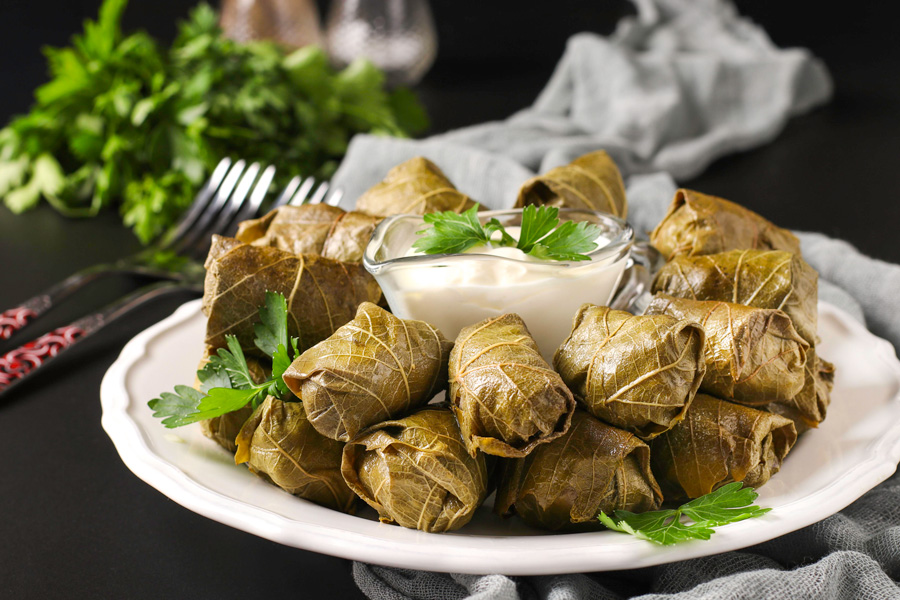
It is hard not to notice that Turks love stuffed items, which is why they hold an iconic status in Turkish cuisine. This time, dolma ("something stuffed") is grape leaves. Like stuffed zucchini, this is a meatless stuffed grape recipe comprising rice, tomatoes, onion, garlic, parsley, and olive oil.
The term yaprak sarması is used interchangeably with yaprak dolma. “Sarması” translates as “wrapped” or “rolled”.
A teaspoon of the vegetable mixture is placed near the stem end, folded in and rolled up tightly into a small cigar shape.
Stewed Artichokes
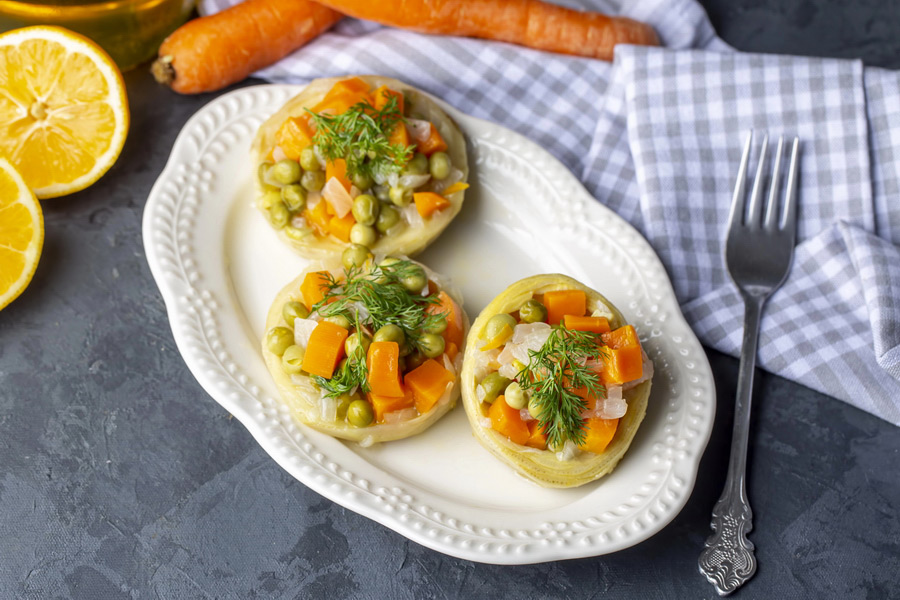
The landscape of Turkish cuisine involves a diverse variety of artichoke dishes. Farmers across the country grow numerous artichoke species. Large bayrampaşa artichokes come from the Marmara region. At the same time, the Aegean and Mediterranean regions remain the heartland of artichoke farming.
The town of Urla in Izmir Province even hosts an annual Artichoke Festival each April. The event celebrates the vegetable’s local significance.
According to the legend, Zeus transformed a mortal girl named Cynara into a goddess. She then went to live with him on Mount Olympus. But when Cynara fled back to her earthly home, the enraged god turned her into an artichoke.
İçli Köfte (Stuffed Meatballs)
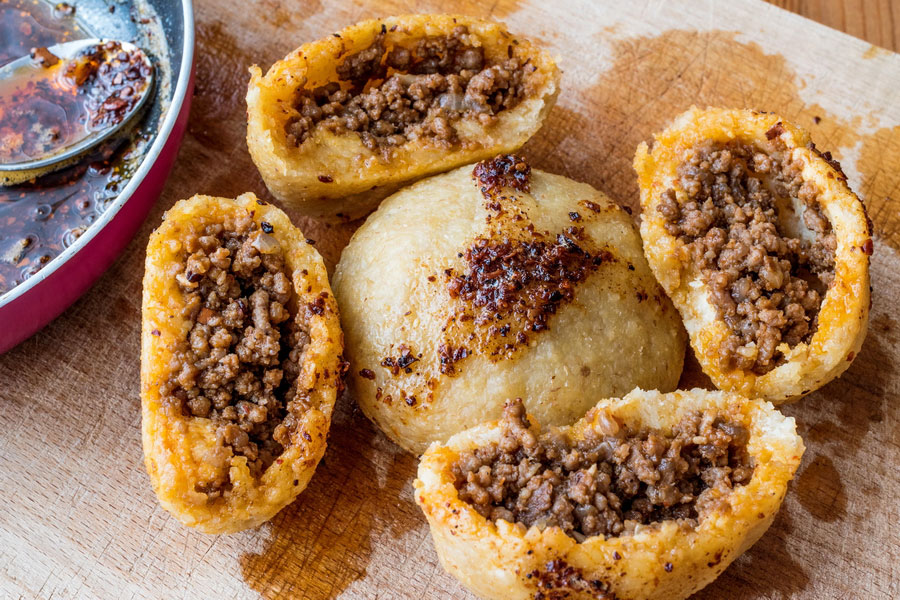
In Turkish food culture, stuffed meatballs – or icli kofte (içli köfte) – come in numerous varieties. Each carries a distinctive regional heritage, such as Adana and Şanlıurfa meatballs.
This Turkish meal comes from Levantine cuisine. In the Middle East, Arabic speakers call it kibbeh or kubba.
Ground beef or minced lamb with onions, parsley, black pepper, salt, and bulgur wheat is a typical ingredient of içli kofte. This mixture is shaped into a shell that covers round meatballs. So, it is no coincidence that the word kibbeh gained the meaning of "a covering" (kababa in Aramaic).
Boiled meatballs are often accompanied by melted butter or tomato sauce, while fried meatballs are balanced with ayran.
Rahibe Köftesi (Nun's Meatballs)
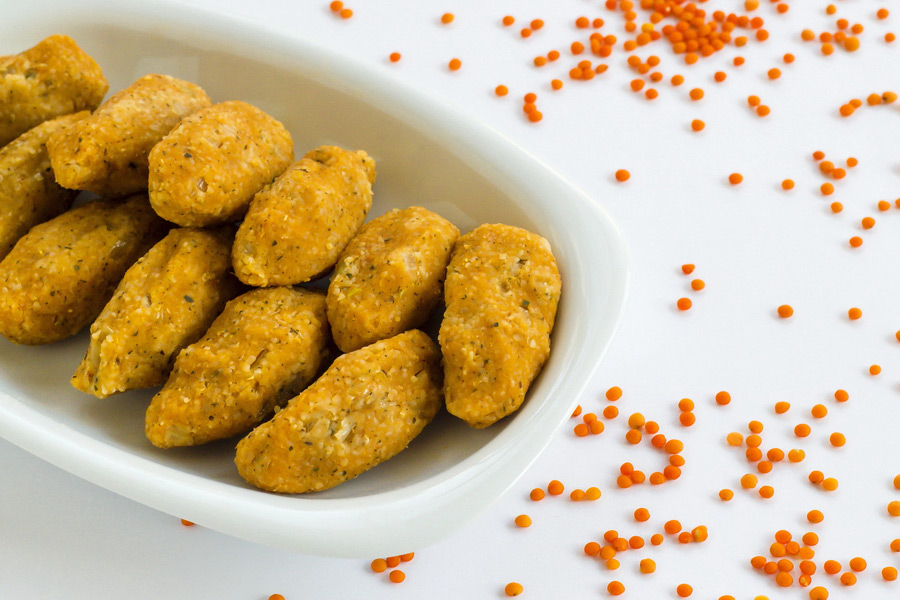
Rahibe köftesi translates as "a nun's meatballs." Nobody knows why "nun’s meatballs," but perhaps it is because they do not contain any meat. The dish is made from bulgur, semolina, onions, tomato paste, and aromatic spices.
After soaking the bulgur in hot water, the mixture is kneaded into small balls and boiled until tender. Then, it is coated in a rich sauce of garlic, pepper paste, tomato paste, olive oil, and plenty of fresh parsley.
Simple yet flavourful, rahibe koftesi is one of the most popular Turkish vegetarian recipes.
Peynirli Mantı (Cheese Manti)
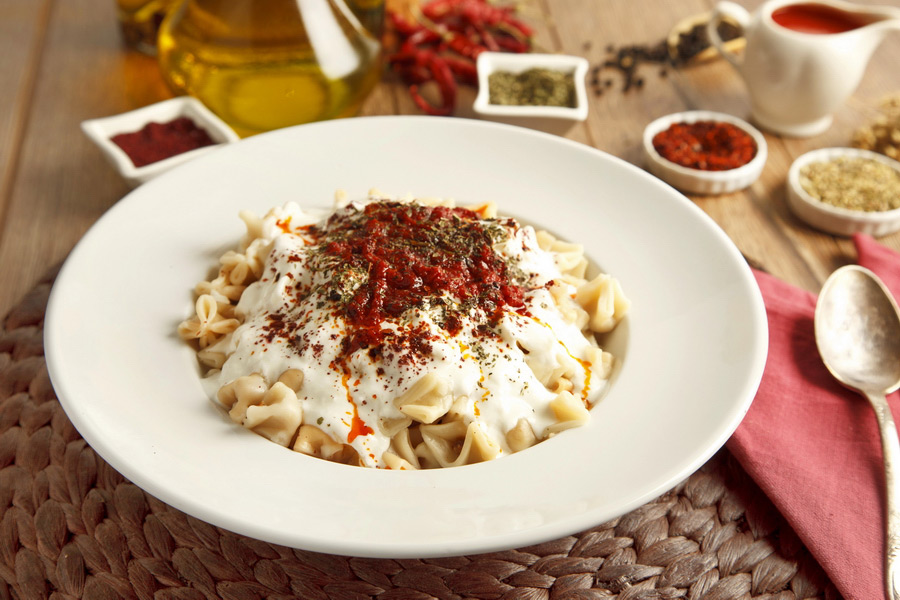
Who made the first stuffed pasta: ravioli or mantı? No one knows for sure. The two look similar. These small pockets of dough may have spread from one culture to another, or they may have appeared independently.
Most scholars agree on one point. Turkic and Mongol peoples carried mantı along the Silk Road and brought the recipe to Anatolia and Central Asia.
In Kayseri, they first boil the small cheese-filled dumplings, then top them with yoghurt and chilli flakes. While ravioli usually comes with cheese fillings only, Turkish mantı can also hold herbed and spiced minced lamb.
Chicken Kadınbudu Köfte (Chicken Kadinbudu Meatballs)
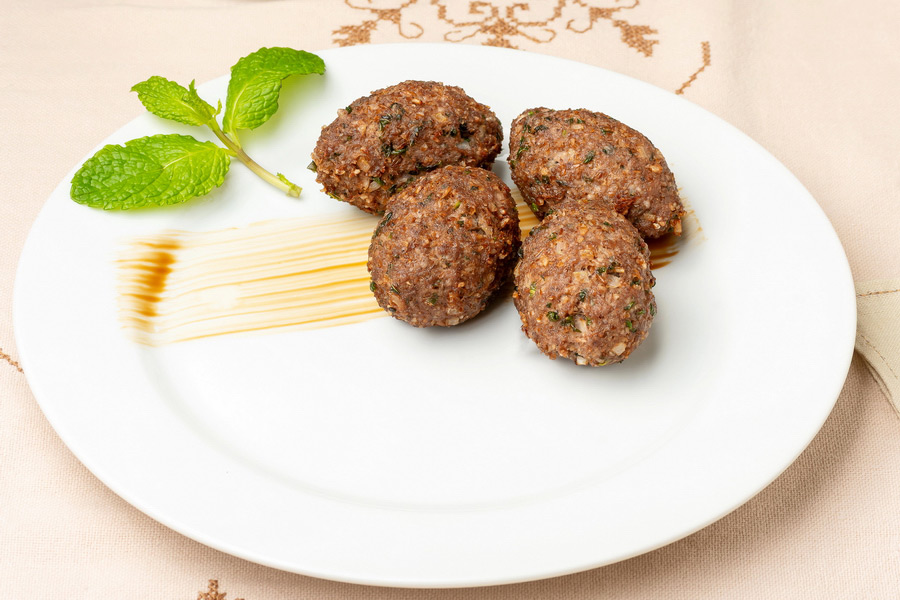
Legend has it that there was a man who disliked meatballs, and his wife tried to make him like them. One day, she made rice meatballs, which he finally liked and exclaimed, "This is a woman's meatballs!"
Over time, the word "woman" was replaced with "woman's thigh" – kadınbudu. However, the most common story is that the shape of köfte resembles a woman's thigh, and that is why it was given this name.
Kadınbudu köfte contains minced meat, rice, onion, egg, and Turkish spices, coated in breadcrumbs and fried.
Ali Nazik Kebab
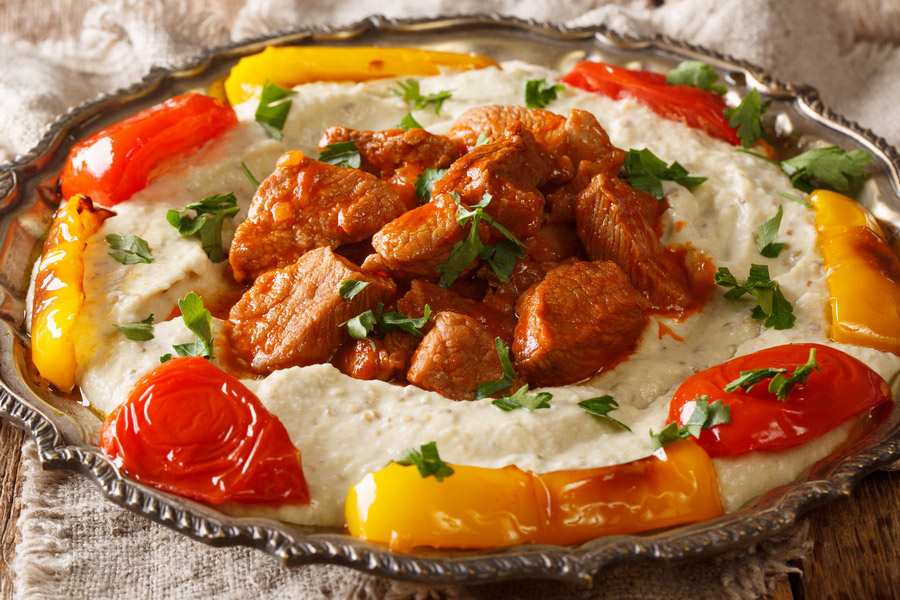
Kebab is almost synonymous with Turkish food. The town of Gaziantep is home to Ali Nazik kebab, a creamy blend of grilled eggplant and yoghurt crowned with tender lamb.
Customarily consumed during Ramadan, its name combines Ali, said to be the person behind the recipe, and nazik, the Turkish word for “gentle.” According to legend, Ali's gentle hand crafted this dish.
In a region where antep means delectable food and generous hosts, it is no surprise that Turkish dishes like this shine.
Iskender Kebab
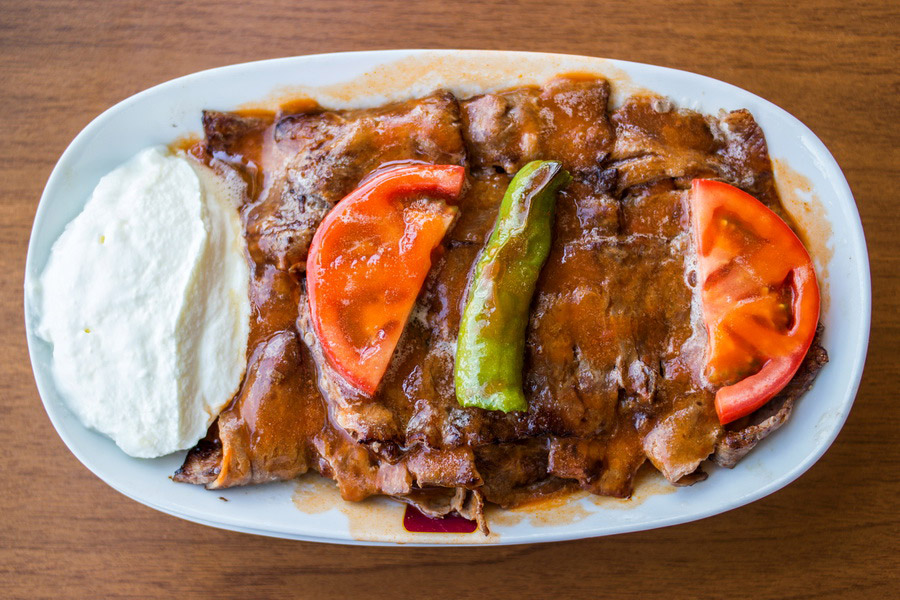
Also dubbed the King of Turkish kebabs, it is made with grilled lamb, hot tomato sauce, and pita bread, balanced with butter and yoghurt. The dish is widespread throughout Turkey.
The Iskender kebab was invented and popularised by Iskander Efendi, a Bursa resident in the late 19th-century Ottoman Empire, whose descendants still operate the restaurant in the city.
Kabak Tatlısı (Pumkin Dessert)
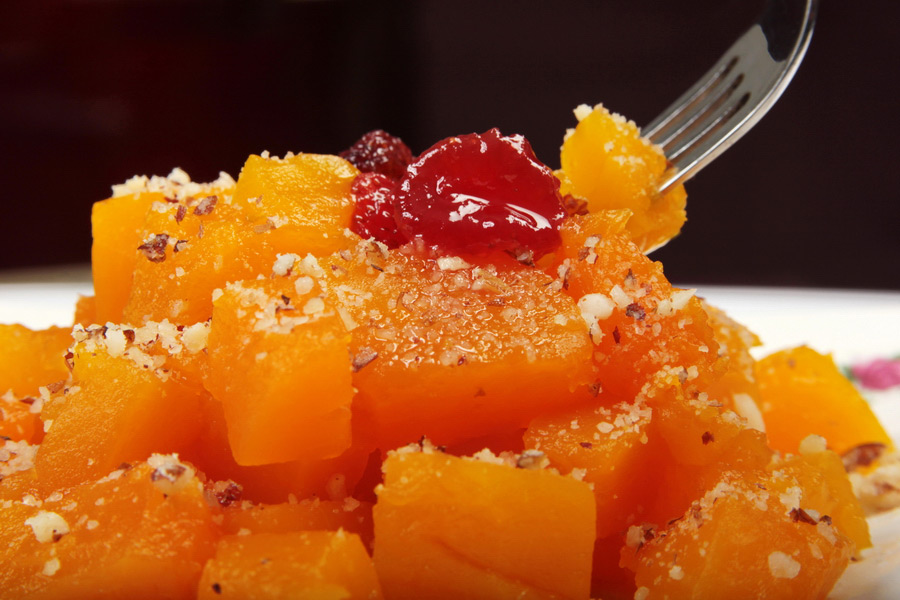
Those with a sweet tooth looking for Turkish food recipes made from natural ingredients will appreciate a pumpkin dessert, kabak tatlısı in Turkish.
The people of Hatay know that the best pumpkin dessert is made by resting pumpkin pieces in lime water for a day and then boiling them in syrup. Aydin, Antalya, and Adapazarı also have their varieties. And each is registered with the Turkish Patent and Trademark Office.
Kabak tatlısı can be eaten with crushed walnuts, hazelnuts, almonds, or coconut chips.
Turkish Delight
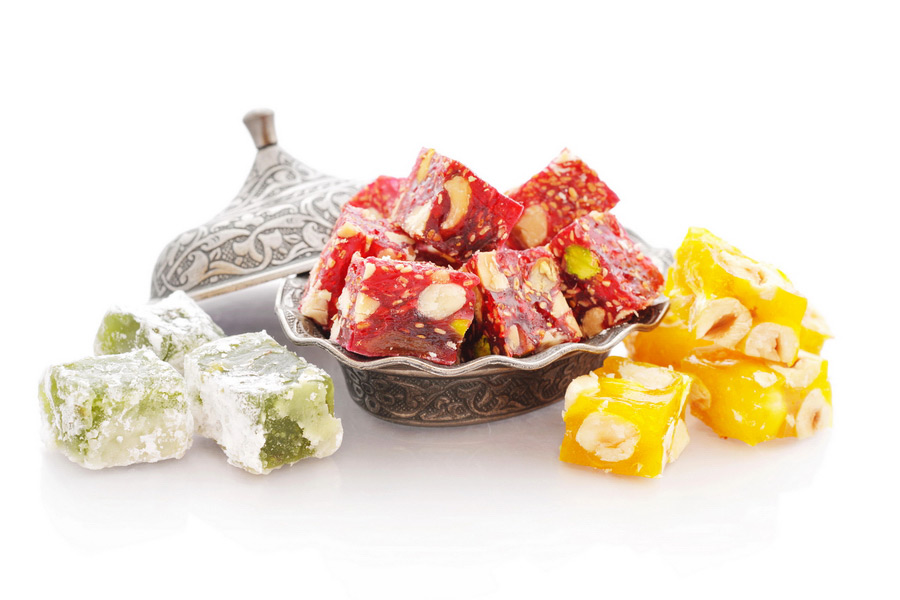
An exploration of Turkish desserts is impossible without Turkish Delight (lokum). Istanbul offers the perfect places to taste it. The colourful stalls of Grand Bazaar and Spice Bazaar sell fresh lokum, pistachio baklava, and other traditional treats.
Baklava
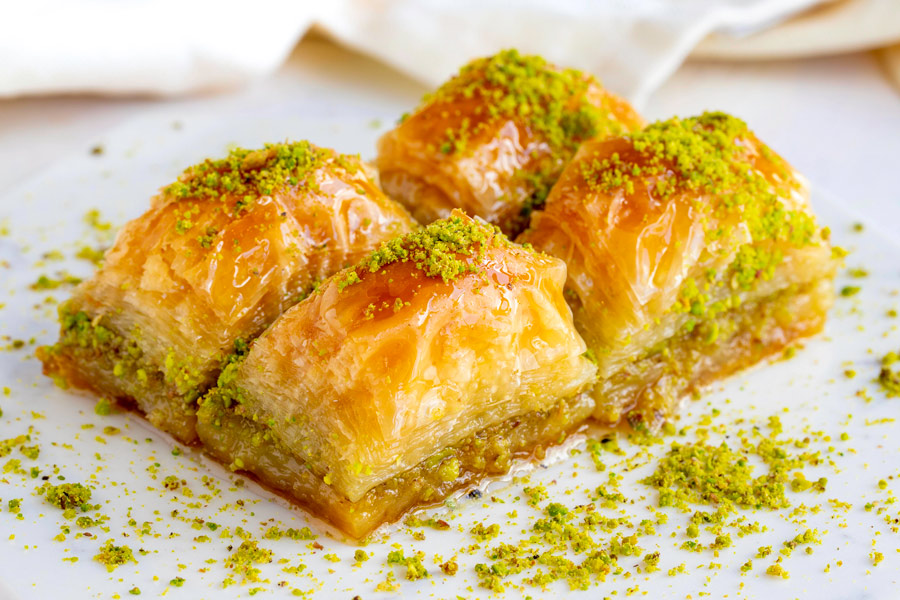
These syrup-soaked, multi-layered Turkish pastries filled with ground nuts have been famous since at least the 11th century. The diamond-cut dessert, gleaming upon large round trays, appears in many regional forms in Turkey.
Many Turkish women continue the tradition of preparing baklava at home. Specialised bakeries and sweet shops also keep secret recipes to ensure this Turkish delicacy remains a national treasure.
Baked Sea Bass
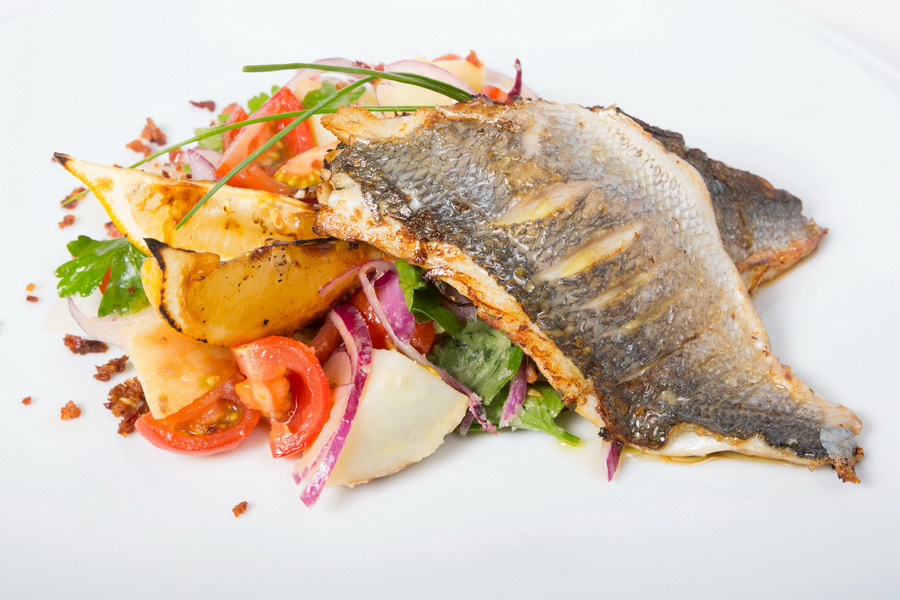
A seaside or yachting holiday in Turkey is not complete without fresh-caught fish – often baked, grilled, or steamed to perfection. But for something a little different, try levrek marine, a marinated sea bass dish.
Traditional Turkish food offers something for every taste. A simple Turkish meal can include grilled meats, fresh salads, and rich Turkish pastries for dessert. Many feature humble yet flavourful Turkish ingredients such as lentils, eggplant, yoghurt, and olive oil. Whether hearty kebabs or light Turkish vegetarian recipes, Turkish food culture emphasises sharing, generosity, and enjoying tasty food together.


